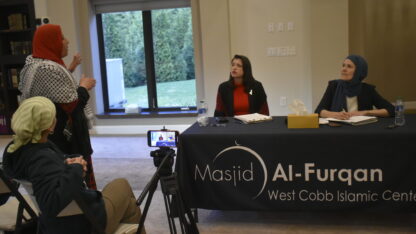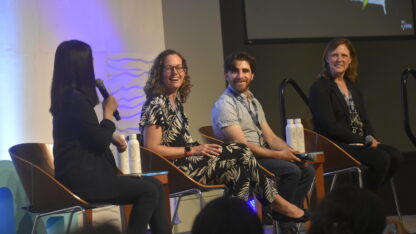Wildlife Centers In Atlanta See An Uptick In Injured Animals Needing Help
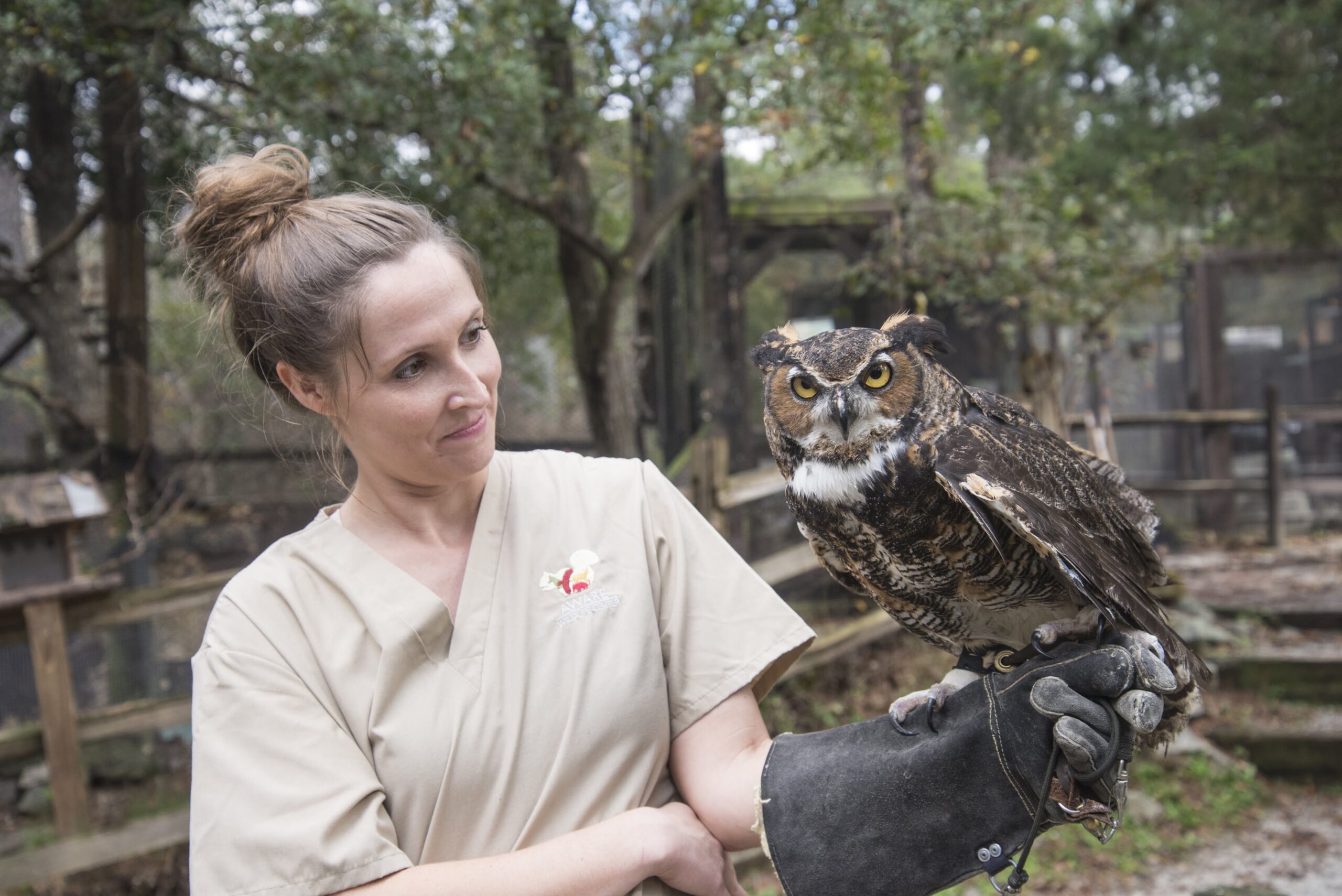
Darla Warnock, volunteer Lead Ambassador Handler at AWARE Wildlife Center, with rescued ambassador great-horned owl Owlscar the Grouch. The center has seen an increase recently in the number of animals it helps.
Courtesy of AWARE Wildlife Center
A couple of crows at AWARE Wildlife Center know a few words.
“Hi,” they say in sweet, nasally high voices. “I love you.”
They’re in a big cage in a small former-park ranger building, near a barred owl named Gazer, who will hoot her resonant call when Marjan Ghadrdan, the director of animal care at AWARE, asks her to.
The building is stuffed full of places to treat and house recuperating wildlife. Hummingbirds sip nectar near AWARE executive director Scott Lange’s desk. Baby opossums sleep in a fuzzy pile in one cage while a chipmunk darts across the cage next door.
The animals here have been injured or orphaned. Some, like Gazer, who’s partially blind, are permanent residents. Others eventually will be released once they’re strong enough to live in the wild again.
“This year alone, we’ve had alligators, river otters, beavers, foxes, you name it,” Lange said.
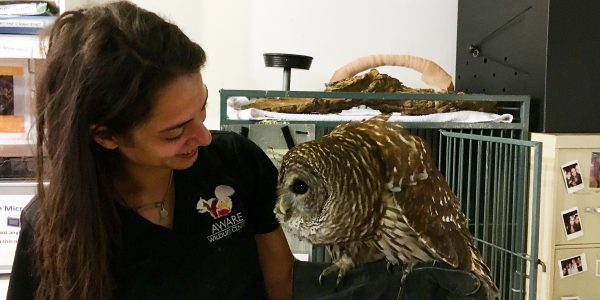
The Stonecrest nonprofit treats about 1,500 birds, reptiles and mammals a year. The past few years, Lange said, that number has been climbing up. It’s a trend not just at AWARE, but also at Atlanta’s other wildlife rehabilitation center, the Chattahoochee Nature Center, in Roswell.
“We haven’t seen a dramatic increase this year, but basically the steady sort of increase over time continues,” Lange said.
A couple of factors are at play, he said. One, is just that more people seem to know about AWARE.
The other, he said, is development. People are moving into places where animals used to live. The animals lose habitat, some of them adapt to human neighborhoods, and generally, interactions between people and wildlife increase.
That often doesn’t go well for the wildlife.
“Far and away the most common threat to animals is being hit by cars,” Lange said. The animals are often lured to roadsides by trash that people have thrown out their windows.”
The issues are seasonal, said Kathryn Dudeck, wildlife director at the Chattahoochee Nature Center. In the winter, turtles who were doing their version of hibernation get brought in when they are disturbed by construction projects. In the summer, she sees animals tangled in fishing line or that have swallowed fishing lures, or animals sickened by fertilizer or pesticides.
Then there are poisonings by rat poison, and attacks by cats or dogs.
The Chattahoochee Nature Center, which focuses on birds of prey, reptiles and the occasional amphibian, has experienced a distinct jump in number of patients this year, Dudeck said.
“Last year was a record year in the nearly 16 years I’ve been the wildlife director, and that was just over 600 cases,” she said. “This year we’re at roughly 375 cases, which is about 10 percent over where we were this time last year.”
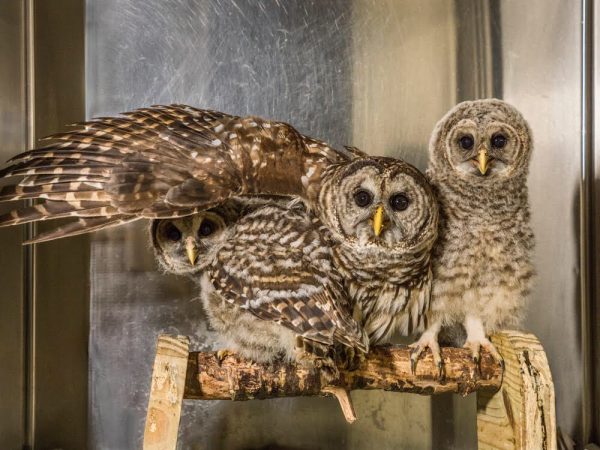
Dudeck, like Lange, cites development as a cause, but she also blames the weather.
The past few winters have been relatively warm, and that means that weak or older animals that might have died in the cold, didn’t.
“So we got an increase in the already compromised animals,” she said.
The warm winter weather also woke up animals like box turtles which should have been sleeping.
“They [were] kind of, in all honesty, wandering around somewhat aimlessly unable to find things like slugs and snails that would be the bulk of their diet in spring,” she said.
Liz Crandall, chief operating officer of the Tennessee-based Wildlife Resources and Education Network, said the various reasons for the increase make sense to her. In her previous job at the Southeastern Raptor Center at Auburn University, she said development caused rising numbers of patients. So did awareness of the Raptor Center, she said, as it got active on social media.
Her organization – WREN, for short — coordinates transport for injured animals in Georgia, Alabama and Tennessee to places that can treat them, like the two centers in Atlanta, and to the many individual volunteers who are certified to care for wild animals. (The Georgia Department of Natural Resources licenses rehabilitators and maintains a list of them.)
“There’s definitely not enough rehabbers,” Crandall said. “It’s a hard job.”
At AWARE, Lange looked in on a barn owl who’d been attacked by someone with a shovel. He said it can be depressing to work with so many animals that have been harmed by people – some intentionally, though the majority are those accidental encounters, with cars, for instance.
“But then you get the joy of helping one of those animals survive and maybe get a second chance at life in the wild, so that’s the upside,” he said.




